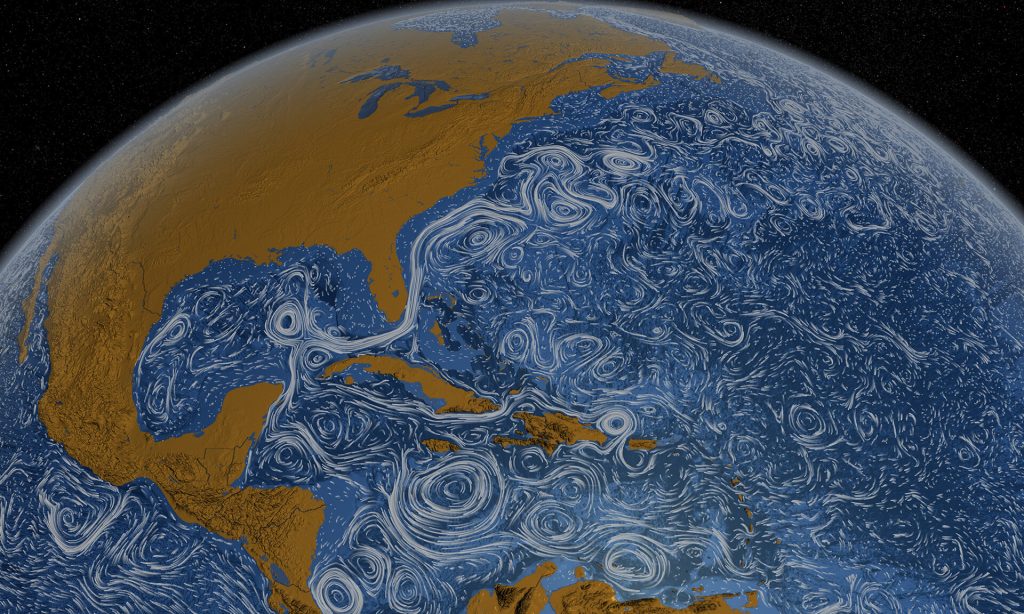
New research reveals the surprising ways atmospheric winds influence ocean eddies, shaping the ocean’s weather patterns in more complex ways than previously believed.
Much like the windy weather patterns that affect the Earth’s surface, our planet’s oceans experience their own distinct weather patterns. These weather patterns, known as eddies, are circular currents of water that are typically about 100 kilometers wide.
A new study of satellite imagery and high-resolution climate model data by scientists at the University of Rochester upends previous assumptions and provides insight about how those surface and ocean weather patterns interact. Scientists formerly believed atmospheric wind had a damping effect, slowing the eddies, but the study, published in Nature Communications, offers a new theory that better explains the complexities of how atmospheric wind affects eddies.
“It’s actually more interesting than what people had previously thought,” says Hussein Aluie, a professor in the Department of Mechanical Engineering and the Department of Mathematics and senior scientist at the University’s Laboratory for Laser Energetics “There’s a marked asymmetry in how the wind affects these motions, and it depends on the direction they spin.”

Aluie says that prevailing winds that move longitudinally across the globe, such as the westerlies and trade winds, will slow the eddies when they move in the opposite direction but energize them if their spin is aligned.
In between the swirling eddies are intricate tangles of ocean weather patterns known as strain. While strain patterns aren’t as easily distinguished by the naked eye, Aluie says they account for about half of the ocean’s kinetic energy and are damped or energized by wind in similar ways as eddies.
“The new energy pathways between the atmosphere and the ocean that we discovered can help design better ocean observation systems and improve climate models,” says Shikhar Rai ’23 Ph.D. (mechanical engineering), first author of the study and a postdoctoral investigator at Woods Hole Oceanographic Institution. In addition to improving climate modeling, being able to better predict the ocean’s weather patterns could have practical applications for fisheries and help better direct commercial ships where to go.
The study focused largely on the mechanical interactions between the atmosphere and the ocean. In future studies, Aluie plans to investigate the role eddies play in transporting energy between the oceans and atmosphere.
More information:
Shikhar Rai et al, Atmospheric wind energization of ocean weather, Nature Communications (2025). DOI: 10.1038/s41467-025-56310-1
Provided by
University of Rochester
Citation:
How does the atmosphere affect ocean weather? (2025, January 31)
retrieved 31 January 2025
from https://phys.org/news/2025-01-atmosphere-affect-ocean-weather.html
This document is subject to copyright. Apart from any fair dealing for the purpose of private study or research, no
part may be reproduced without the written permission. The content is provided for information purposes only.






